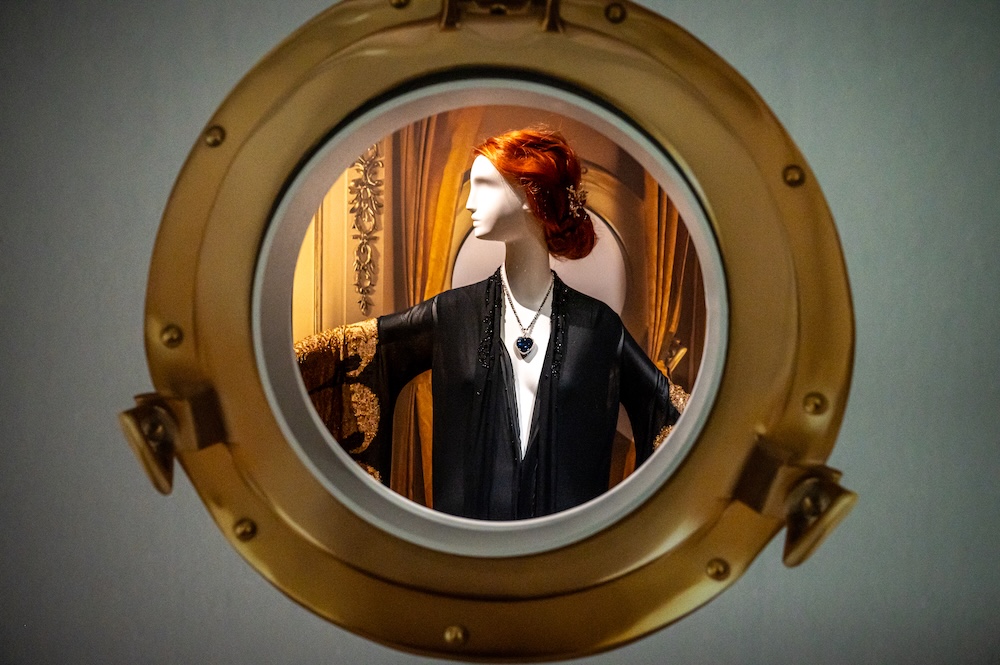The Titanic and fashion: a new exhibition in The Hague
Joanna Moorhead
More than a century after the sinking of the Titanic, many of the issues that swirl around the ship’s loss have an uncanny resonance, according to the director of the museum in The Hague that this weekend opens a major show centred on the world’s best-known nautical disaster.
“Migration and the threat of war were issues in 1912 when the Titanic sank, exactly as they are today,” says Margriet Schavemaker, director of The Hague’s Kunstmuseum.
“Also, what you see back then, and this also has relevance today, is a belief in technology – but alongside it there was and is a realisation that nature holds the power, and has the ability to fight back.”
These themes, alongside a world-class collection of fashion from the 1910s, has made Titanic and Fashion: The Last Dance, a natural choice for the museum.
The show (which continues to 25 January) weaves history and cinematography together: exhibits include costumes from the 1997 blockbuster Titanic alongside original clothing and accessories from the era.
The tailored cream suit with contrasting navy lapel and waistband worn by Kate Winslet as she boarded the ship as Rose DeWitt Bukater in the film’s opening scene looks entirely in place with the real-life outfits around it, including a dress in white cotton and purple velvet thought to have been worn by Maria Henrietta Rowell-Rutgers van Rosenberg around 1912.
Titanic costume designer Deborah Lynn Scott won an Oscar for her costumes for the movie, and the Kunstmuseum show underlines her meticulous research, demonstrating how closely the costumes replicate the authentic outfits of the period.
The red satin and lace dress worn by Rose when she met Jack Dawson (played by Leonardo Di Caprio) is another standout exhibit, as is the so-called ‘sinking dress’ of layered chiffon under a pink wool coat worn by Winslet as the ship went down.
Also included in the exhibition are works by contemporary names including influential British designer Craig Green, whose pieces in the show include two brocade outfits in pink and green, reminiscent of diving suits, from his 2024 collection, as well as a sculptural ensemble with David Curtis-Ring that poses the question: is this a lifebuoy or a person? Who is saving whom? And who is the hero?
Direct connections between the Netherlands and The Titanic include references to Dutch craftsmanship – furniture on display by Mutters and Son recalls the pieces the company made for luxury cabins on the ship. And the Dutch nationals who were on board – including cook Hendrik Bolhuis, stoker Wessel van der Brugge (both of whom perished) also get a name-check.

The outfits of the steerage class passengers, and the workers on board, are another focus: the collarless brown shirt and corduroy trousers worn by Jack in the movie are among the exhibits, alongside real-life working-class outfits from the times.
On board
There’s also an exploration of similar tough, simple working gear which is again in vogue in The Netherlands – gender-neutral suits based on boilersuits made by Amsterdam’s Bonne Suits, for example.
The only items in the exhibition that were ever on board the actual Titanic are a crockery set and a postcard. The first – a cup, saucer and plate with the ensignia of the White Star shipping line – was sent from the ship’s doctor John Edward Simpson to his mother, before the vessel set sail from Southampton: he was one of the 1500 who died.
The postcard was sent by the third Dutch national on board the ship, passenger Johan George Reuchlin, to his children. It arrived at the family home in Rotterdam after news that he too had perished in the disaster.
Thank you for donating to DutchNews.nl.
We could not provide the Dutch News service, and keep it free of charge, without the generous support of our readers. Your donations allow us to report on issues you tell us matter, and provide you with a summary of the most important Dutch news each day.
Make a donation